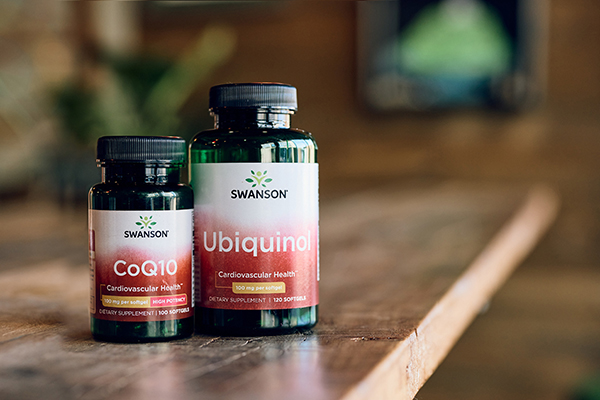One of the best things you can do to promote digestive health is fill up on probiotics through supplements or foods. Luckily, probiotic-rich foods are more widespread than ever. This post rounds up some common and not-so-common foods that contain beneficial bacteria, plus tips on how to incorporate them in your diet every day!
Fermentation Is Key
The most traditional source of probiotics is fermented foods. During the fermentation process, existing friendly bacteria converts the natural sugars and carbohydrates in food to lactic acid and other compounds. As the friendly bacteria proliferate and grow, lactic acid changes the taste and texture of the food. A couple well-known examples are sauerkraut and kimchi, both of which are made from types of cabbage. But there are many more fermented foods than that, and some companies have begun adding probiotics into foods just to provide more health advantages for their products.
Limitations of Fermented Foods
Before we get into specifics, though, keep in mind that you should always be reading labels. If a brand of sauerkraut has been made using vinegar, for example, it likely doesn’t contain live bacteria since vinegar prohibits bacterial growth. Many dairy products are pasteurized, killing the bacteria they contain, so yogurt brands add friendly bacterial strains after pasteurization. Pickles, sauerkraut and other fermented foods can be pasteurized, too. Either reach for products labeled as “raw” or read the label to see if strains are added after pasteurization.
Reading labels won’t tell you everything, though. Brands aren’t required to tell you the specific strains of bacteria in their product. You often won’t know which strains you’re getting from a particular brand of yogurt or kombucha (although some do list bacterial strains on the nutrition panel). Similarly, companies don’t have to list the CFUs (the unit of measurement for bacterial microorganisms) on their labels either!
So even though loading up on fermented foods can provide digestive support, whether or not they deliver probiotics is unclear. The documented definition of probiotics, according to the Food & Agriculture Organizations of the United Nations in 2014, is “live microorganisms, that when administered in adequate amounts, confer a health benefit on the host.” It’s hard to tell if the beneficial bacteria in fermented foods meets the qualifications of this definition because of the amount of variance in each batch, brand and type of food.
Another limitation to keep in mind is that heating probiotic-rich foods can easily destroy all the live beneficial bacteria in a product. Maybe you spot a probiotic bread on the shelf on your next shopping trip—use that to make toast, and you’ve likely destroyed the beneficial bacteria.
Still, it can’t hurt to fill up on fermented and probiotic foods—they’re still loaded with nutrients and digestive enzymes! Variety is a good idea, since different fermented foods naturally produce different bacterial strains.
 1Yogurt
1Yogurt
You’ve probably already heard that yogurt is a good source of probiotics. Many yogurts contain Lactobacillus strains, one of the most studied bacterial strains. Other strains can be added after pasteurization.
The US National Yogurt Association gives a “Live & Active Cultures Seal” to yogurts that contain 100 million cultures per gram (or 10 million cultures per gram for frozen yogurt products), so keep an eye out for that. Also, try to avoid yogurts with too much added sugars.
How to Use It:
- Top with nuts, fruit and seeds for a snack or dessert
- Top with cucumbers, tomatoes and olive oil for a savory treat
- Use in place of sour cream
- Use as a base for dips and dressings
2Kefir
Kefir is another fermented dairy product similar to yogurt. Think of it as the drinkable version. Many kefirs boast more probiotic content than yogurt. Again, Lactobacillus strains are common.
How to Use It:
- Drink it
- Add to smoothies for a creamy, tangy flavor
- Drizzle over oatmeal
3Sauerkraut
Lactic acid fermentation turns cabbage into sauerkraut. The strain most associated with this fermented veggie is Leuconostoc mesenteroides. The fermentation process also involves Lactobacillus plantarum, L. Cucumeris and L. Brevis. Sauerkraut also contains vitamins A, E and C.
Read labels carefully here—only raw sauerkrauts or manufacturers that add probiotic strains after pasteurization will have beneficial bacteria. Alternatively, you can make your own. Basic sauerkraut is nothing more than cabbage in a salt brine. You can make it in a mason jar on your counter.
How to Use It:
- Add to hearty, savory salads
- Serve with burgers and brats
- Stir into soups and stews at the end of cooking
- It makes an easy side dish for almost any meal
- Don’t forget the brine! Use leftover sauerkraut juice to make vinaigrettes or marinades
4Pickles
The process is very similar to sauerkraut and again features the bacterial strain Leuconostoc mesenteroides and some Lactobacillus strains.
How to Use Them:
- Enjoy as a snack
- Chop and mix with tuna or chicken salad
- Serve during summer grill-outs
- Use leftover brine for drinks, salad dressings or marinades
5Kimchi
Like sauerkraut, kimchi is made from cabbage. The difference? Kimchi is typically made with Napa cabbage, spices and other vegetables to make an extraordinarily spicy and sour version. It’s loaded with beta-carotene, calcium, iron and vitamins A, B and C.
How to Use It:
- Serve as a side dish to almost any meal
- Stir into soups and stews at the end of cooking for a spicy kick
- Use the brine to make a spicy vinaigrette
- Thinly chop into a slaw and use to top burgers, tacos and more
6Other Fermented Vegetables
Yes, we’ve covered the more popular fermented vegetables (sauerkraut, pickles and kimchi), but you can ferment just about any vegetable, like carrots, beets, tomatoes and even cauliflower. For most of them, the process is the same. It’s an easy way to preserve veggies and support digestive health with food.
How to Use Them:
- Like sauerkraut and kimchi, fermented vegetables make a great side dish for just about every meal
- Chop and use in salads
- Top tacos with them for a tangy crunch
7Miso
This traditional Japanese seasoning is made from fermented soybeans or grains. Miso typically contains Lactobacilli and Bifidus strains. You can buy it as a paste and add it to soups, stir-fries and more. It contains vitamin K and some protein, too.
How to Use It:
- Add to soups
- Add to stir-fries
- Use for salad dressings, glazes and marinades
8Kombucha
Kombucha has grown in popularity in the past few years due to the potential probiotic content of the beverage. Kombucha is a fermented tea made with a SCOBY (symbiotic culture of bacteria and yeast), and it has a high amount of beneficial bacteria. It’s been enjoyed for centuries.
How to Use It:
- Drink it
- Use in smoothies for a tangy flavor
- Mix with sparkling water and fruit juice to make mocktails
9Kvass
This traditional European beverage can be made by fermenting rye, barley, beets or carrots. It contains Lactobacillus strains.
How to Use It:
- Just drink it
- Add to smoothies
10Natto
This popular Japanese dish is made with fermented soybeans. In addition to beneficial bacteria, it contains the enzyme nattokinase, which supports heart health.
How to Use It:
- Add to curries
- Add to salads and salad bowls
- Add to spring rolls
- Add to wraps
11Tempeh
Tempeh is another food made from fermented soybeans. It’s firm and white, similar to tofu. It’s frequently used as a meat substitute for vegans and vegetarians. Tempeh is typically cooked before it’s eaten, which may destroy the beneficial bacteria.
How to Use It:
- Use wherever you would use tofu
- Eat with miso or soy sauce
- Use in soups, salads, sandwiches and more
12Foods with Added Probiotics
Thanks to modern science, many food manufacturers can now add probiotics to their products. Labels might mention “probiotics” or “live and active cultures.” Here are a few to look for!
- Honey
- Dark Chocolate
- Milk
- Almonds
- Whey protein
13Make Your Own
Traditionally, fermented foods were homemade. Why not give it a try? Sauerkraut and other fermented veggies can be made with a simple salt brine and mason jar. You can even make yogurt, kefir, kombucha and more at home. The internet has many basic recipes, and once you get the hang of it, you can add herbs and spices to make it your own.
Sources:
- www.fao.org, Fermented Frutis and Vegetables. A Global Perspective…
- Prevention.com
- Globalhealingcenter.com
- Rijkers, Ger T., de Vos, Willem M., Brummer, Robert-Jan, Morelli, Lorenzo, Corthier, Gerard, Marteau, Philippe. (2011). “Health benefits and health claims of probiotics: bridging science and marketing.” British Journal of Nutrition.
- Breidt, Fred; McFeeters, Roger F.; Perez-Diaz, Ilenys; Lee, Cherl-Ho. (2013). “Fermented Vegetables.” Food Microbiology: Fundamentals and Frontiers, 4th Ed. 841-855



